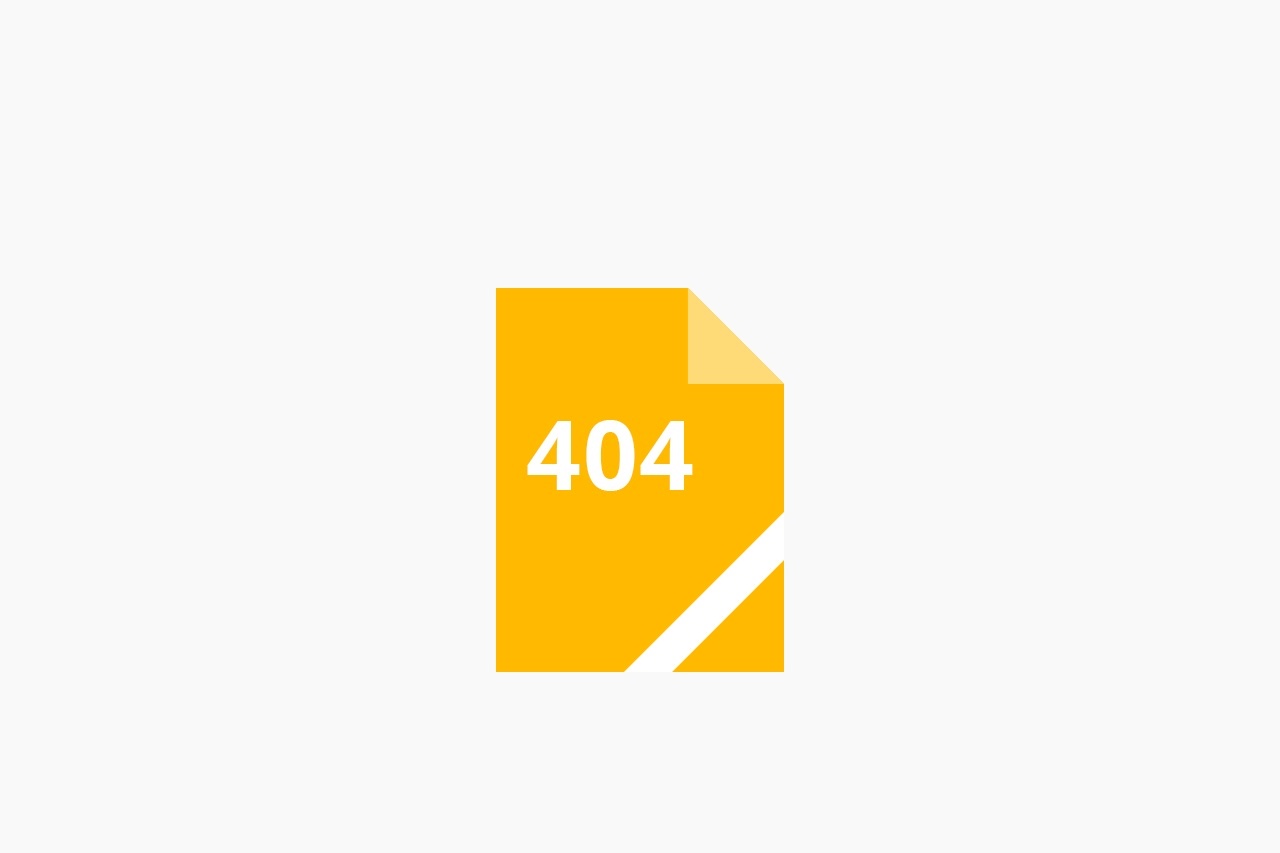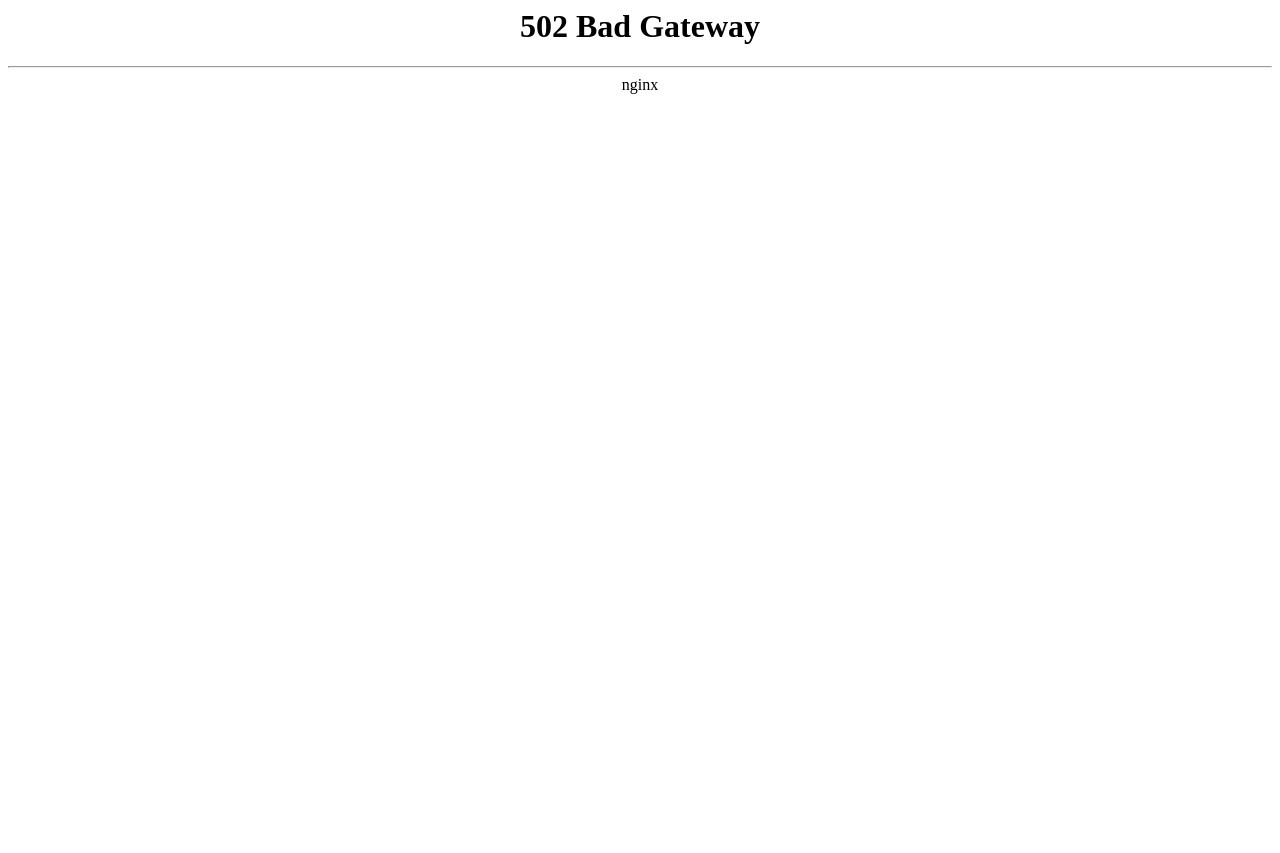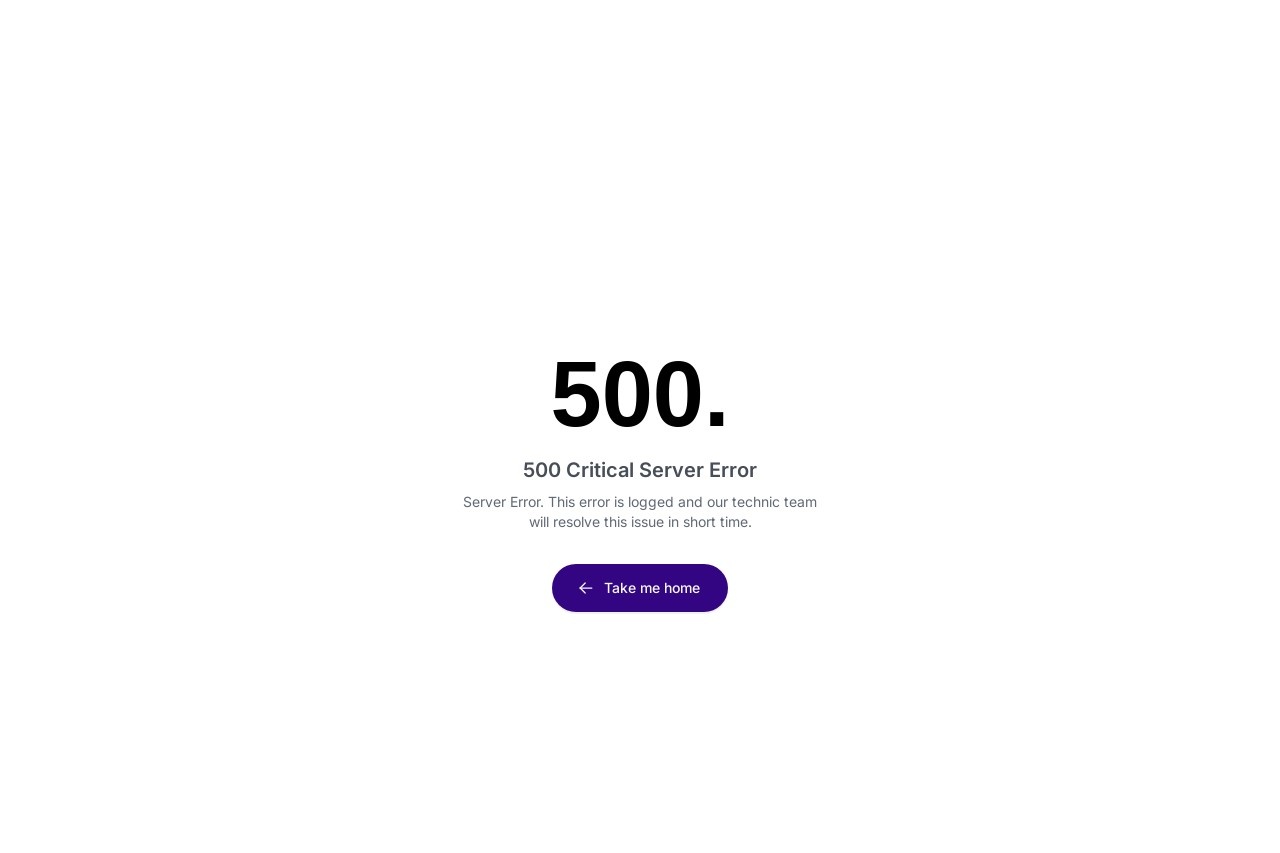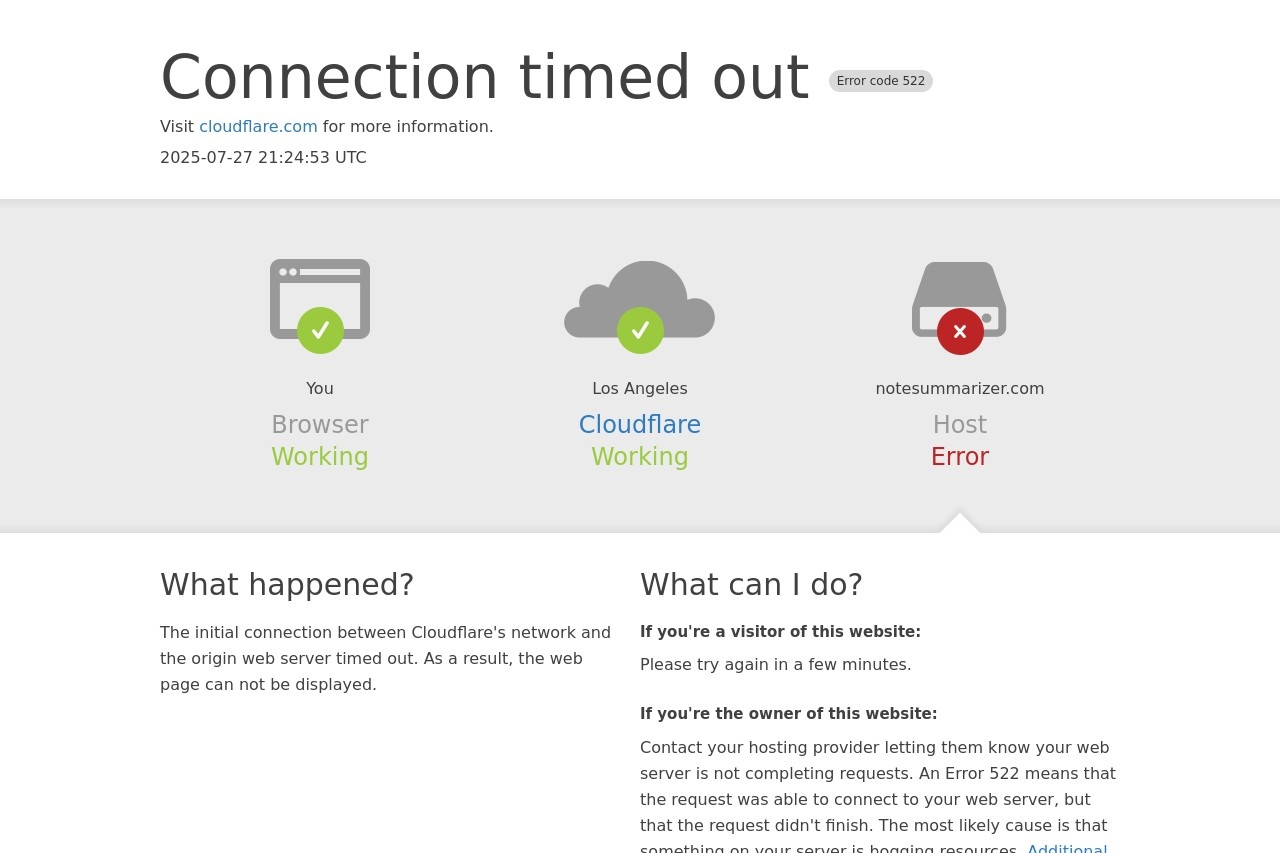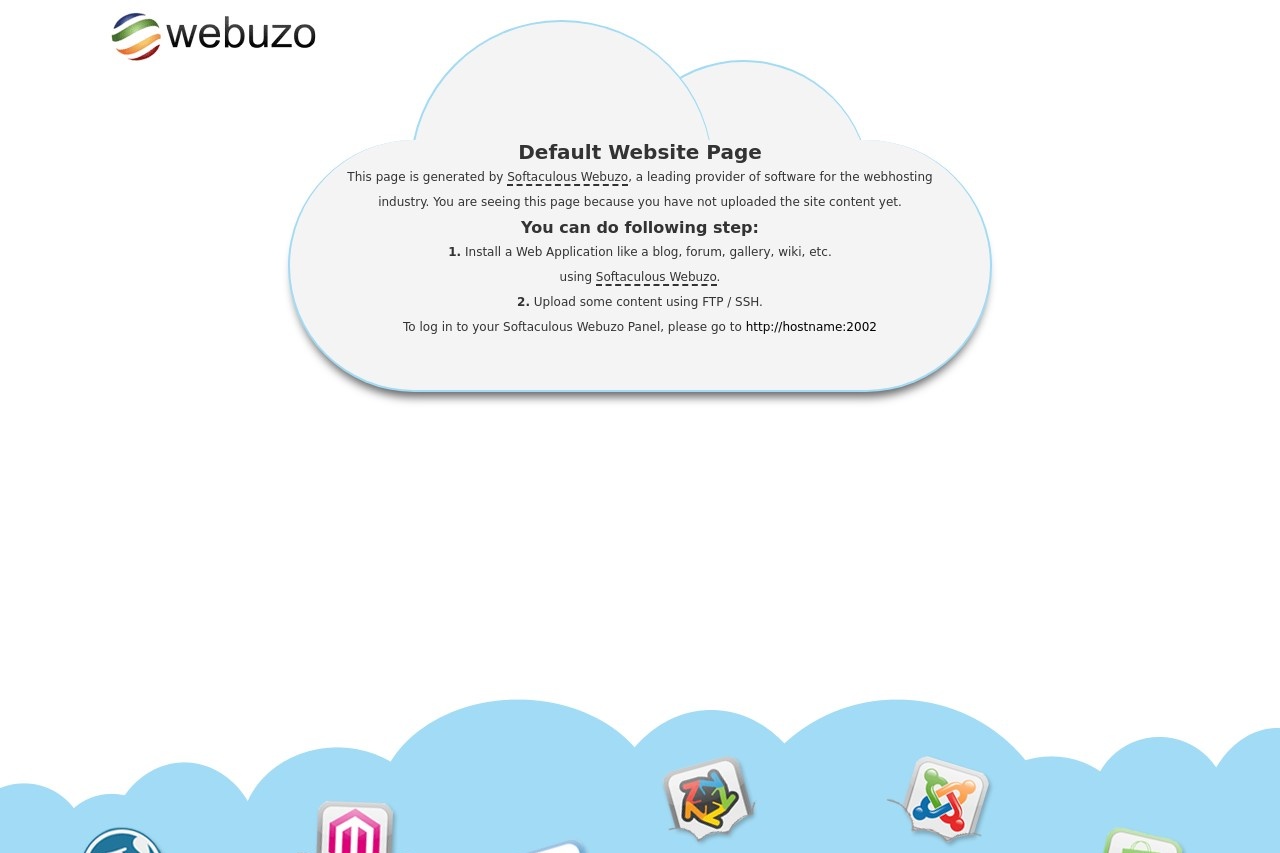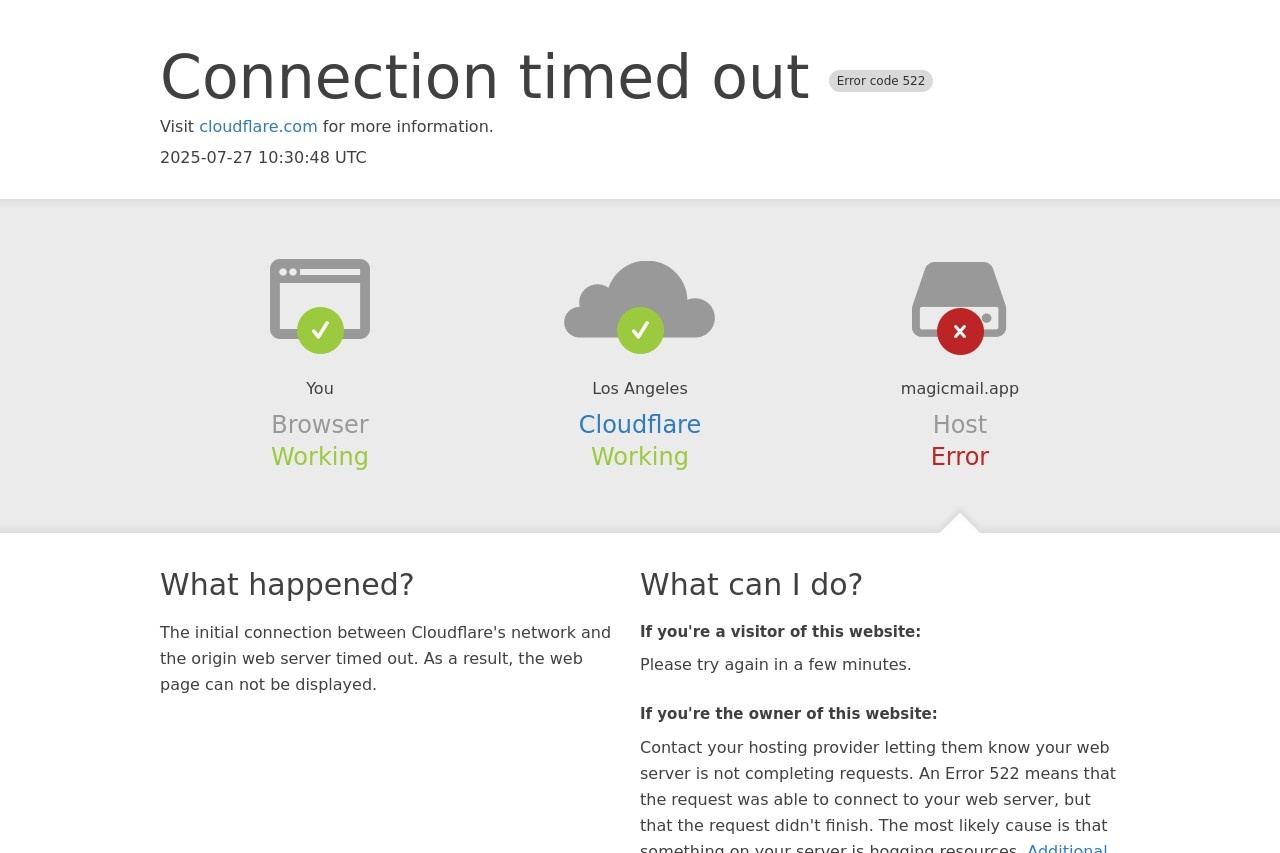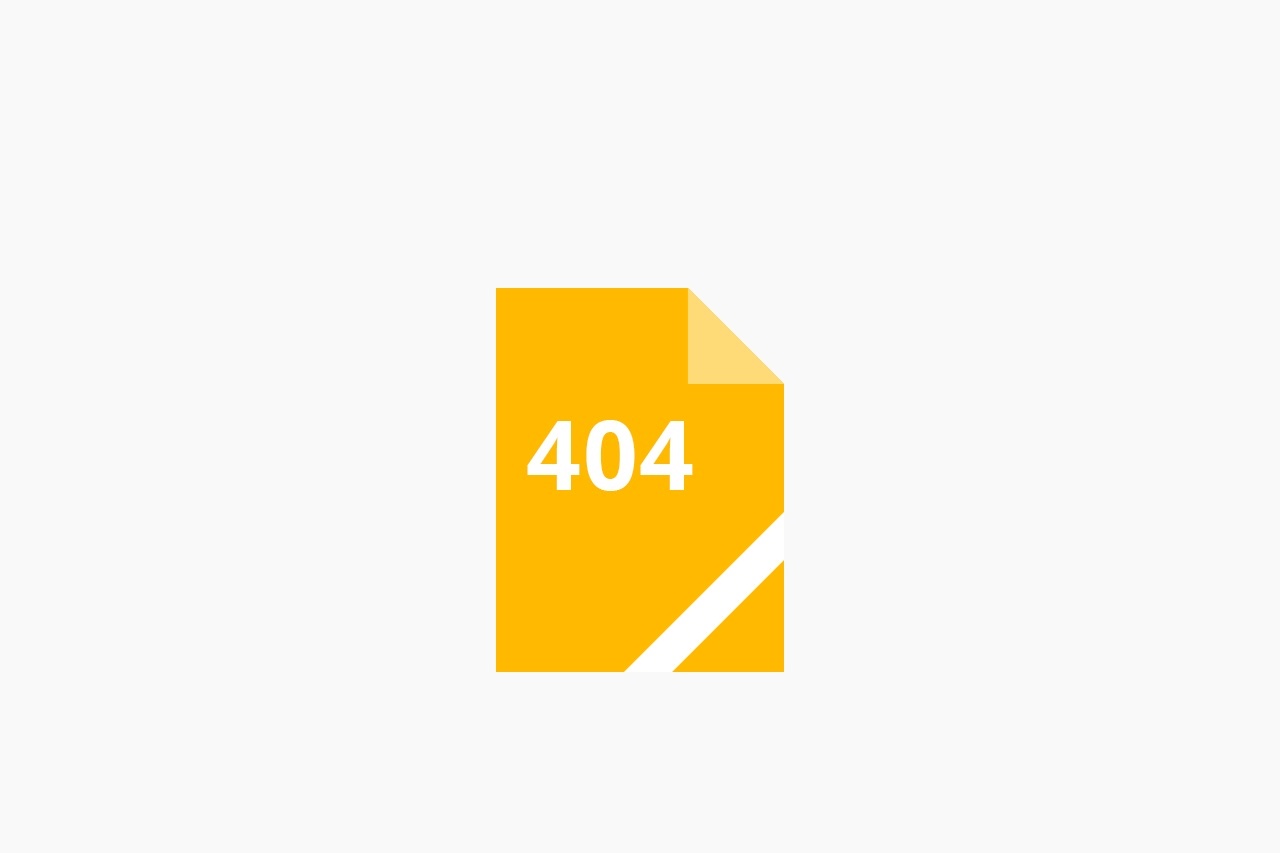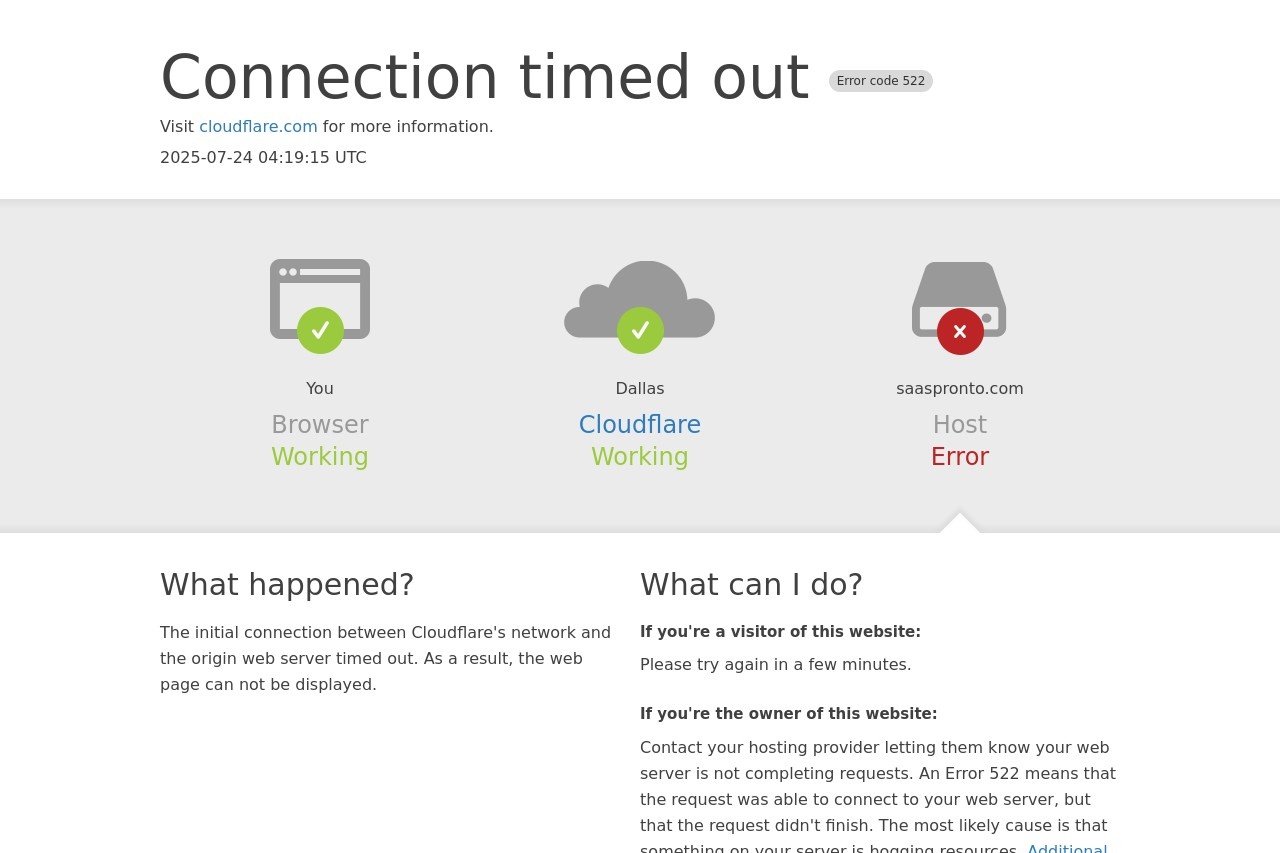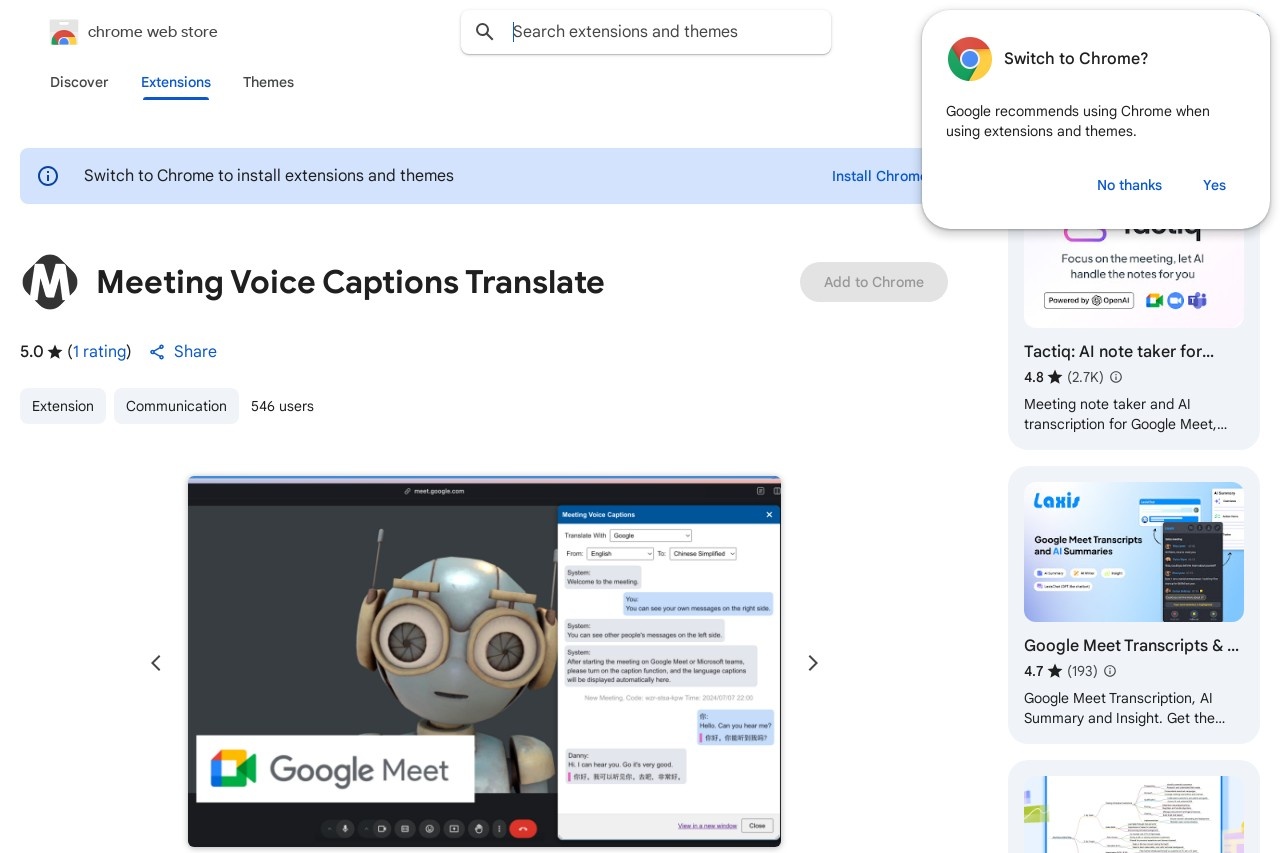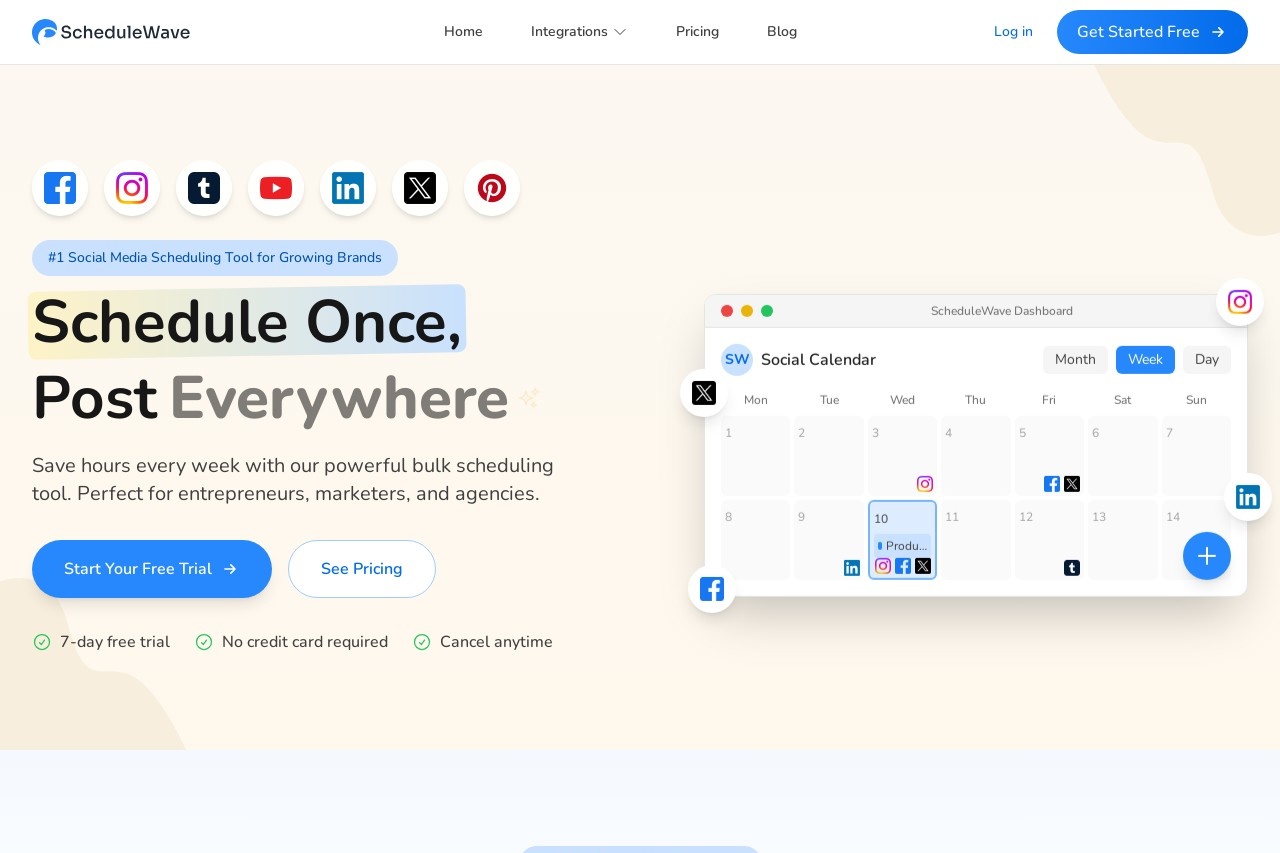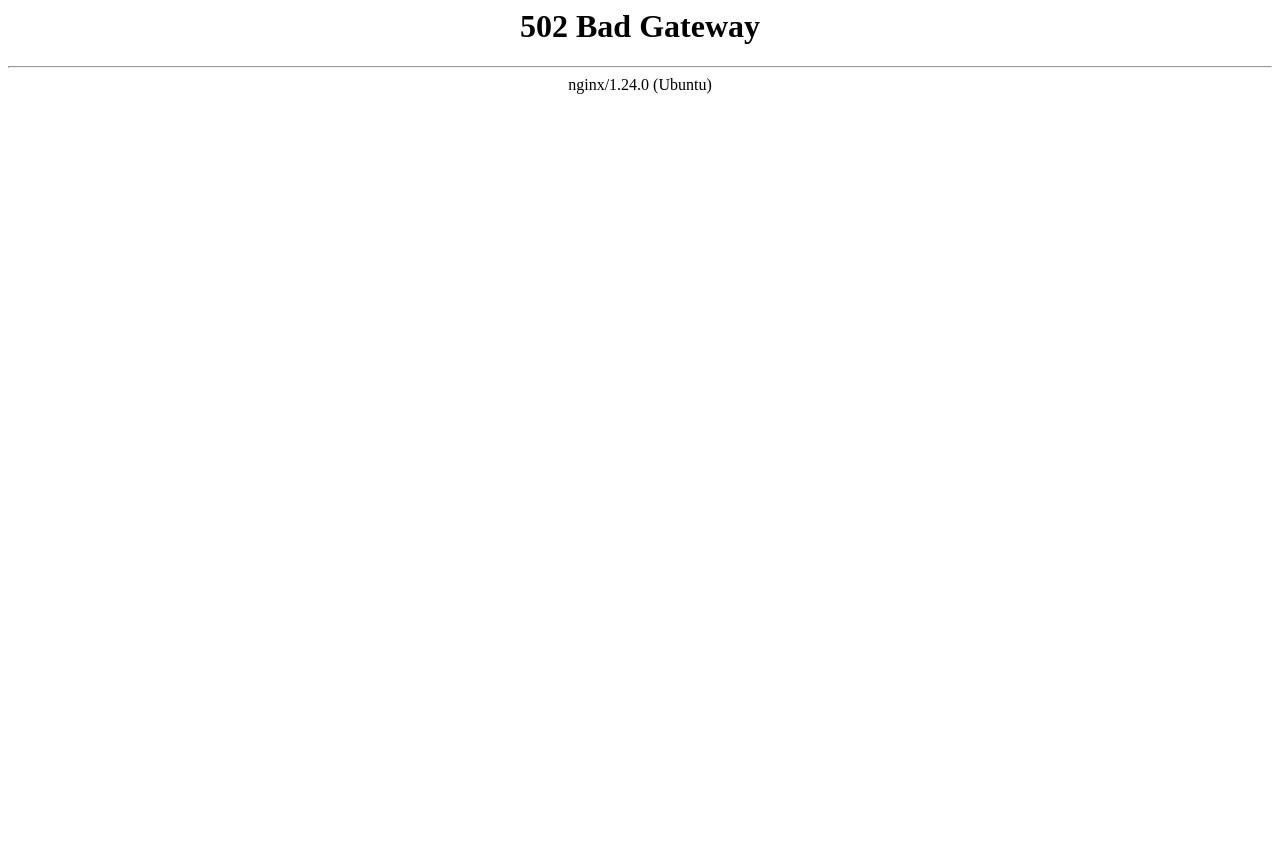
The server encountered a temporary error and could not complete your request.
502 Bad Gateway
502 Bad Gateway
The server encountered a temporary error and could not complete your request.
What Does This Error Mean?
A 502 Bad Gateway error occurs when one server acting as a gateway or proxy receives an invalid response from another server. This usually indicates a communication problem between servers rather than an issue with your device or local network.
Common Causes
- Server overload or maintenance
- Network connectivity issues between servers
- DNS configuration problems
- Firewall blocking the connection
- Software bugs in the proxy server
How to Fix It
While this is primarily a server-side issue, you can try these troubleshooting steps:
- Refresh the page - The error might be temporary
- Clear your browser cache - Stale data might cause issues
- Check other websites - Verify if the problem is specific to one site
- Try a different device or network - Helps isolate the issue
- Wait and try again later - Server administrators may already be working on a fix
For Website Administrators
If you manage the website, check these server components:
- Reverse proxy configuration
- Backend server status
- Network connections between servers
- Server resource usage (CPU, memory)
- Error logs for specific details
Remember that 502 errors are usually temporary. If the problem persists for an extended period, contact the website administrator or your hosting provider for assistance.
502 Bad Gateway
A 502 Bad Gateway error is an HTTP status code that indicates a server acting as a gateway or proxy received an invalid response from an upstream server. This error typically occurs when there is a communication breakdown between servers in the backend infrastructure.
Common Causes
- Server Overload: The upstream server may be temporarily overloaded or undergoing maintenance.
- Network Issues: Connectivity problems between the gateway server and backend servers.
- Configuration Errors: Incorrect proxy or firewall settings can disrupt server communication.
- DNS Problems: The gateway server may fail to resolve the upstream server's domain name.
How to Fix It
If you encounter a 502 error as a user:
- Refresh the page (the issue might be temporary)
- Clear your browser cache and cookies
- Check your internet connection
- Try accessing the site later
For website administrators:
- Check server logs to identify the specific cause
- Verify all backend services are running properly
- Review proxy server configurations
- Monitor server resources (CPU, memory, bandwidth)
Technical Details
The 502 error occurs in the HTTP/1.1 protocol when a server acting as a gateway cannot get a valid response from the upstream server. Unlike 500 Internal Server Error which indicates problems with the server itself, 502 specifically points to communication failures between servers in the request chain.
This status code is part of the HTTP standard defined by RFC 7231 (Section 6.6.3) and is typically accompanied by a brief error message in the response body.
502 Bad Gateway: Understanding the Server Error
The 502 Bad Gateway error is an HTTP status code indicating that one server received an invalid response from another server while acting as a gateway or proxy. This message means the server you're trying to access encountered a temporary problem and couldn't fulfill your request.
Common Causes of 502 Errors
- Server Overload: The upstream server may be too busy to handle requests.
- Network Issues: Connectivity problems between servers can trigger this error.
- DNS Problems: Incorrect domain name resolution can lead to gateway failures.
- Firewall Restrictions: Security systems might block legitimate server communication.
- Server Configuration Errors: Improper proxy or gateway settings often cause 502 errors.
How to Fix 502 Errors
If you encounter this error as a user:
- Refresh your browser (sometimes it's a temporary glitch)
- Clear your browser cache and cookies
- Check your internet connection
- Try accessing the site later
For website administrators:
- Check server logs for specific error details
- Verify all backend services are running properly
- Review recent configuration changes
- Monitor server resource usage
Technical Background
The 502 status code is part of the HTTP/1.1 standard (RFC 7231). It occurs when Server A (acting as gateway/proxy) receives an invalid response from Server B while trying to fulfill the client's request. Unlike 500 errors which indicate problems with the server itself, 502 errors specifically point to failed communication between servers.
Most 502 errors are temporary and resolve automatically when the underlying issue is fixed. However, persistent 502 errors may require technical intervention from the website's hosting provider or development team.
502 Bad Gateway
A 502 Bad Gateway error is an HTTP status code indicating that one server received an invalid response from another server while acting as a gateway or proxy. This error typically occurs when a server is unable to complete a request due to communication issues between upstream servers.
Common Causes
- Server Overload: The upstream server may be temporarily overloaded or down for maintenance.
- Network Issues: Connectivity problems between servers, such as DNS failures or firewall restrictions.
- Configuration Errors: Incorrect proxy or gateway server settings.
- Timeout: The upstream server took too long to respond.
How to Fix It
If you encounter a 502 error as a user:
- Refresh the page: Sometimes, the issue is temporary.
- Check the website's status: The problem may be on the server side.
- Clear your browser cache: Corrupted cached data can sometimes cause issues.
If you're a website administrator:
- Restart servers: Reboot the gateway or upstream servers.
- Check server logs: Identify the root cause of the failed communication.
- Update configurations: Ensure proxy settings are correct.
- Monitor server resources: Prevent overloads by scaling resources.
Technical Details
The 502 error is part of the HTTP/1.1 standard (RFC 7231). Unlike client-side errors (4xx), it indicates a server-side issue. The response should include a brief HTML message explaining the error, though the exact format varies by server software (e.g., Nginx, Apache).
While frustrating, 502 errors are usually temporary. Persistent issues require investigation of server infrastructure and network paths between systems.

